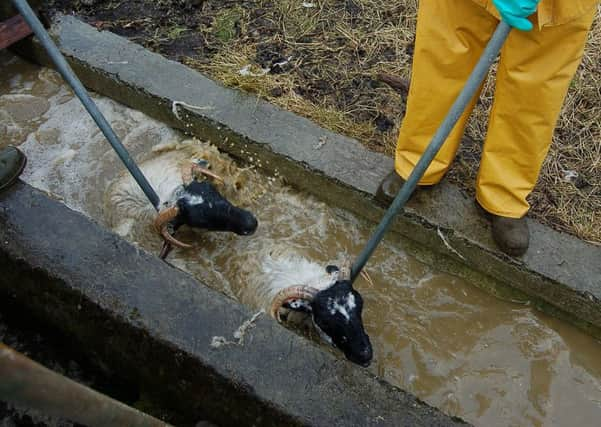Industry ups efforts to beat £300m-a-year menace


Professor Jacqui Matthews, deputy director of the Moredun Research Institute, this week said that the ailment was estimated to cost UK agriculture about £300 million a year, with condemned livers alone costing the food chain £3.2m.
Confined to the wetter western side of the country, she said that the disease, which affects both cattle and sheep, had become a serious concern for farmers in recent years.
Advertisement
Hide AdAdvertisement
Hide AdIncreased rainfall had been one reason for the spread but the proliferation of fluke resistant to the most commonly used treatment was feared to be another factor.
“Evidence from various sources suggests that the prevalence of infection has increased considerably in recent years and there are growing concerns about anthelmintic resistance, particularly to one of the most important treatments, triclabendazole”, said Prof Matthews.
On the cattle side, she said that a new information guide urged farmers to identify high-risk areas for fluke on their farms and consider if grazing these pastures in the late summer or autumn could be avoided.
Practical control steps included fencing off wet areas, attending to leaking troughs and pipes, drainage or even early housing.
Asking abattoirs for feedback on infected livers and keeping a close eye on any fluke-related losses in sheep were important, as was using the most appropriate drug to control fluke. She also said that treatments should be used effectively, with care being taken to ensure the appropriate dose was given.
She added that quarantine of incoming stock was also important but stressed that it was imperative that farmers continued to discuss liver fluke treatment choices with their vet or suitably qualified person as part of their specific herd health plan.
On the sheep front, it was announced that an online liver fluke journal had been set up to give tips and ideas for farmers to discuss with their vet or health adviser for control on their own farm.
The journal, written by George Milne, a sheep farmer in Fife and NSA Scottish regional development officer, looks at the problems he has encountered in the past – and recognises the importance of drawing up a customised fluke plan.
Advertisement
Hide AdAdvertisement
Hide AdThe creation of “George’s journal” follows on from Milne’s farm becoming the first surveillance farm for the Scottish Fluke Action Group, a body which enjoys input from Moredun, National Sheep Association, Novartis Animal Health, Parkside Vet Group, the Scottish Government, Scotland’s Rural College and the University of Edinburgh.
Opening up his farm for others to see, Milne said: “I know personally how damaging this parasite can be to a flock, but I believe many of my fellow farmers aren’t aware of that damage or that disease levels change from year to year.
“If my journal can help others in any way to see how I am managing this disease then it must be a good thing.”